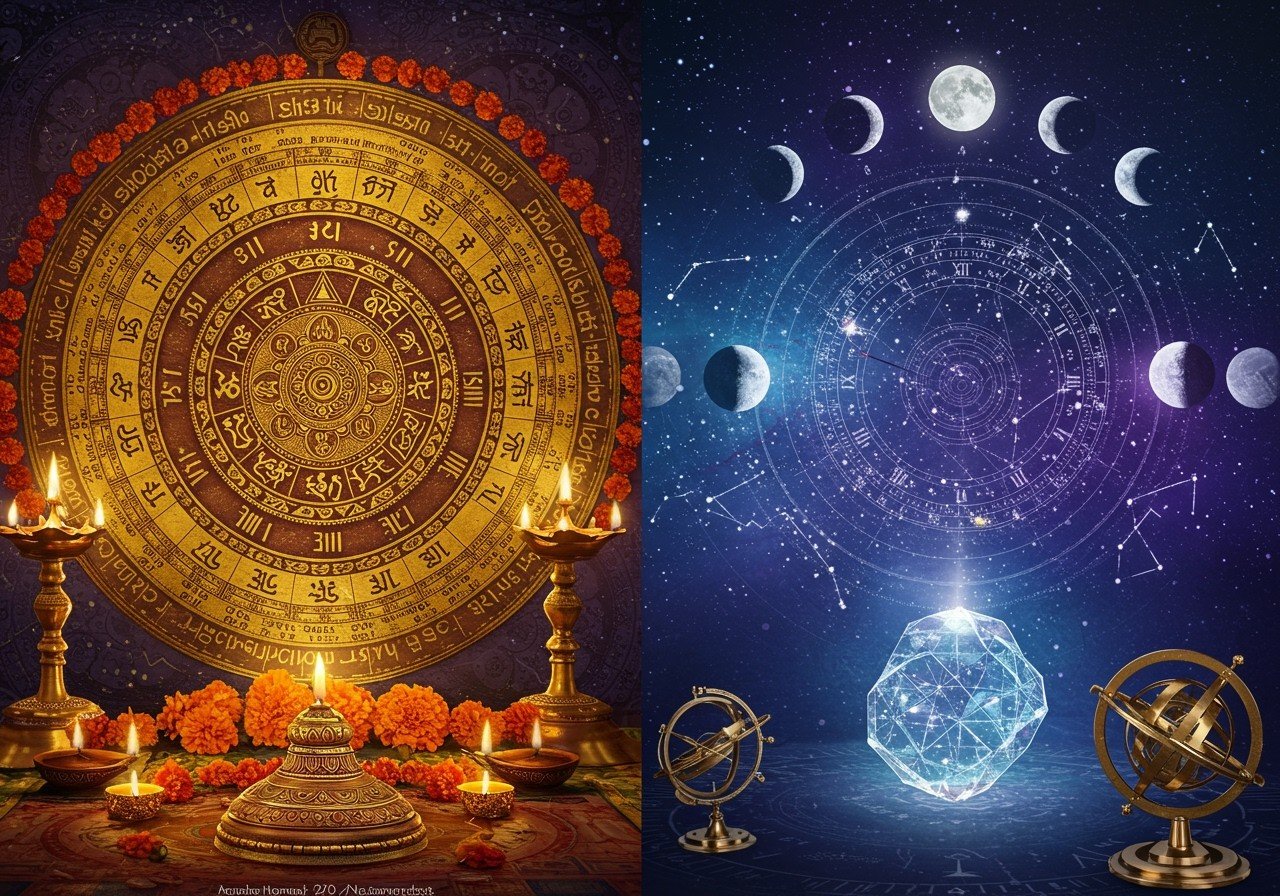
In our vibrant and diverse India, understanding different calendars is truly important. The Vikram Samvat calendar holds a special place in the hearts of many, especially Hindus, Jains, and Sikhs. At the same time, the Gregorian calendar, used worldwide, is essential for global communication, business, and technology. Let’s explore Vikram Samvat 2081 and Gregorian 2025 to understand their cultural and practical significance.
When Does Vikram Samvat 2081 Begin?
Vikram Samvat 2081 roughly corresponds to April 2024 to March/April 2025 in the Gregorian calendar. However, the start date isn’t fixed across India. In some areas, it began in March-April 2024, while others celebrate it around Diwali in October/November 2024. For those following the Lunar calendar, the Hindu New Year in 2025 starts on March 30th and continues until March 19th, 2026. This illustrates the beautiful tapestry of traditions we have in India.
Vikram Samvat and Gregorian Calendar: Key Differences
Generally, Vikram Samvat is 57 years ahead of the Gregorian calendar. But here’s a little quirk: from January to April, the difference is only 56 years! This shows how each calendar has its own unique way of measuring time, reflecting our rich cultural nuances.
Celebrating New Year: A Tapestry of Traditions
India’s diversity shines through in our New Year celebrations. Those following the Lunar calendar celebrate in Chaitra (March-April). Gujaratis welcome the New Year a day after the joyous festival of Diwali. In Nepal, where Vikram Samvat is the official calendar, the New Year begins in mid-April. Such a beautiful array of customs, isn’t it?
The Months of Vikram Samvat
The Vikram Samvat calendar’s months are deeply connected to the lunar cycles, named after constellations or seasons:
- Chaitra (March-April): A time of renewal and the start of the Hindu New Year.
- Vaishakh: Auspicious for weddings and new beginnings, filled with vibrant celebrations.
- Jyeshtha: Often hot and dry, a time for introspection and spiritual growth.
- Ashad: Marking the arrival of the monsoon, a period of cleansing and rejuvenation.
- Shravan: Dedicated to Lord Shiva, observed with fasts and devotional practices.
- Bhadrapad: A time for festivals like Raksha Bandhan and Janmashtami, celebrating relationships and devotion.
- Ashwin: The month of Navratri and Durga Puja, a time for vibrant celebrations of the divine feminine.
- Kartik: Known for Diwali, the festival of lights, signifying victory of good over evil.
- Margsheesh: Considered auspicious for weddings and new ventures, a time of optimism.
- Paush: The coldest month, often celebrated with warm food and gatherings.
- Magh: A holy month for bathing in sacred rivers and performing charitable acts.
- Phalgun: The month of Holi, the festival of colors, symbolizing joy and togetherness.
Each month carries its own unique significance, observed with festivals and rituals that strengthen our bonds as a community.
Cultural and Religious Significance of Vikram Samvat
Vikram Samvat is deeply intertwined with Hindu religious practices. It guides us in determining auspicious dates for festivals, weddings, and sacred ceremonies. This calendar mirrors the agricultural cycle, connecting us with the rhythms of nature. Its continued use helps preserve traditional knowledge and cultural identity within our communities.
In our globalized world, the presence of multiple calendars enriches India’s cultural tapestry. Embracing both traditional and modern systems bridges our past and present, fostering harmony and understanding. This blog post delves deeper into the significance of the Hindu calendar.
Poojn.in: Your Companion for Ritualistic Needs
At poojn.in, we understand the importance of observing traditions accurately. We offer a wide range of products and services to support your spiritual journey:
- Authentic Puja Items: From incense sticks and diyas to specialized puja kits, we have everything you need for your rituals. Find beautifully crafted murtis and other sacred items to enhance your devotion.
- Holy Books and Clothing: Deepen your understanding with our collection of holy books. Dress for your ceremonies with our selection of traditional clothing.
- Decorative Items: Beautify your home with our range of decorative items, including handcrafted wooden masks.
Visit poojn.in today and experience the convenience of having all your puja essentials delivered right to your doorstep.
Respecting Time: A Bridge Between Past and Present
As we compare Vikram Samvat 2081 and Gregorian 2025, we see the vibrant threads of Indian culture. Vikram Samvat connects us to our ancestral traditions and festivals, guiding us through life’s milestones. The Gregorian calendar enables us to engage with the wider world, supporting global connections. Respecting both calendars means honoring our heritage while embracing the present. By understanding these different systems, we appreciate the diverse ways we measure and celebrate time, fostering respect and unity.
Explore our blog for more insightful articles: Hatimura Durga Temple: Celebrating the Divine Feminine and Maha Shivaratri 2025: Dates and Events Guide. Celebrate Ram Navami with us: Ram Navami Celebration: Rituals, Recipes, and Regional Traditions.


